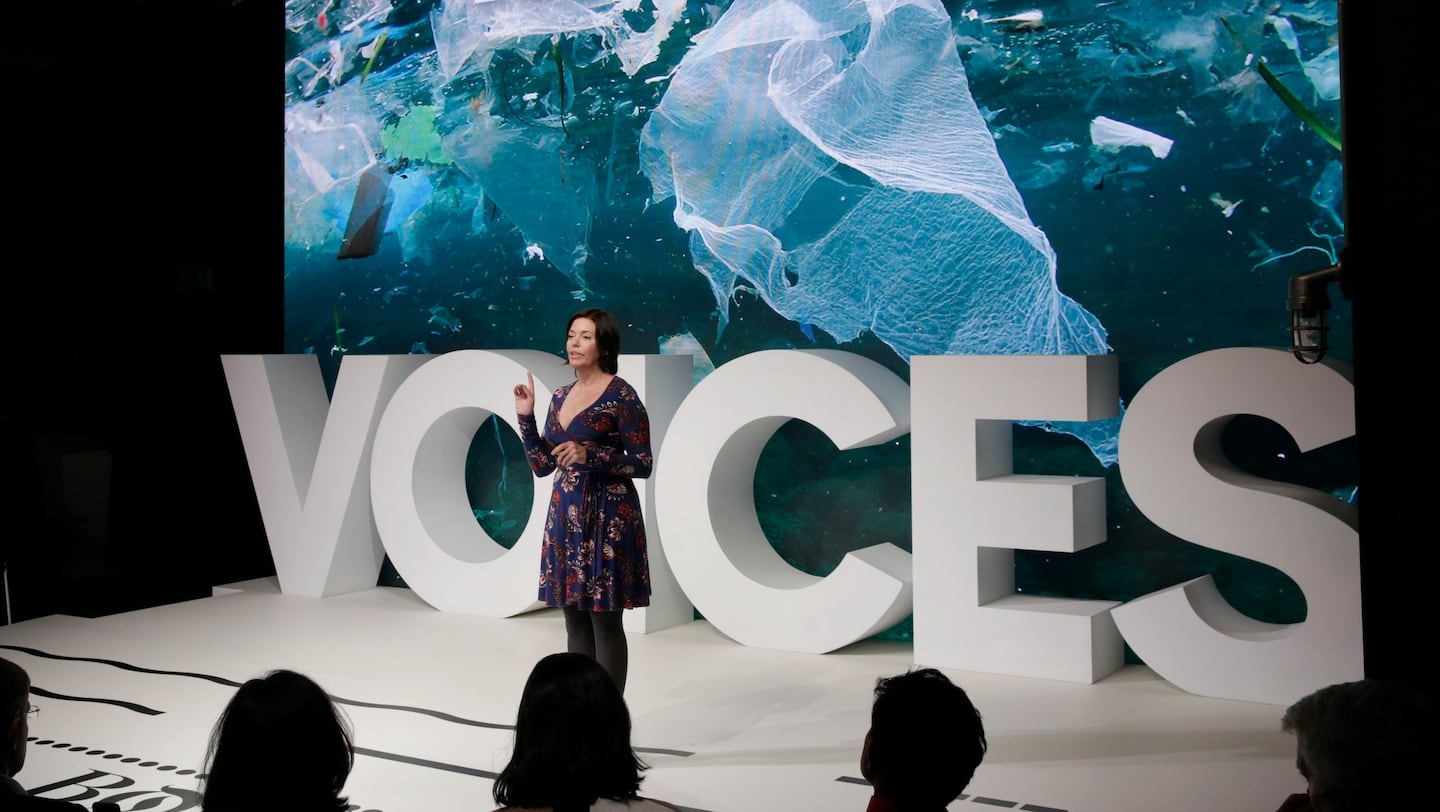
The Business of Fashion
Agenda-setting intelligence, analysis and advice for the global fashion community.

Agenda-setting intelligence, analysis and advice for the global fashion community.

OXFORDSHIRE, United Kingdom — The global plastic waste problem made headlines this year, implicating industries from beauty to beverages. But fashion's immense contribution to plastic pollution is often overlooked.
The average American spends $60 a month on clothes and sends 6 pounds of textile waste to landfill. Multiply that by 160 million American women and that’s nearly $10 billion and one billion pounds of landfill waste just from buying and discarding clothes.
These were the facts that Rachel Lincoln Sarnoff, founder and chief executive of Lincoln Sarnoff Consulting and former executive director of the 5 Gyres Institute, a conservation non-profit that fights ocean plastic pollution, laid bare on stage at VOICES, BoF's annual gathering for big thinkers in partnership with QIC Global Real Estate.
“When I first learned about this I started raising awareness, but it wasn’t until I began working on the ocean plastic pollution problem that I started to see the connection to fashion and what all of us can do to help to solve it,” she said.
Unlike natural materials like cotton, plastics do not break down. Instead, they break up into smaller and smaller pieces, eventually becoming what is known as "micro-plastics," which are often about one fifth the size of a human hair. It's these micro-plastics that can be found in fabric used in apparel production.
“Washing one synthetic fleece jacket releases as many as 250,000 micro-fibres,” said Lincoln Sarnoff. “And because they’re so small we can’t capture them through wastewater treatment … sending about one million tonnes of these into the ocean every single year.”
It’s been more than 100 years since plastic was first invented. But use of the material has accelerated dramatically. A recent global study by US academics found that humans have produced 8.3 billion tonnes of plastic since the 1950s, a figure projected to reach 34 billion by 2050. Most of it has ended up in landfill or oceans.
Within fashion, use is also on the rise, says Lincoln Sarnoff. By 2030, 70 percent of all fabric fibres are projected to be from plastics. Today, the industry is shedding nearly 200,000 tonnes into the ocean.
Washing one synthetic fleece jacket releases as many as 250,000 micro-fibres
It’s not just ocean wildlife that is being affected. Micro-plastics have found their way into the food chain, present in foods we eat and water we drink. Indeed, 83 percent of drinking water contains micro-plastic fibres. This figure reaches 93 percent for bottled water. Micro-plastics contain chemicals linked to obesity, fertility and even cancer, and 93 percent of Americans test positive for these chemicals.
While biodegradable and recyclable plastic has been positioned as a sustainable option, it turns out that composting these plastics requires specific industrial facilities.
“They don’t break down in landfill or a green bin,” said Lincoln Sarnoff. “Unless processed with the right amount of humidity and heat, they don’t break down. That’s why companies like Amazon are being sued about claims around biodegradable and recyclable plastics.”
Eliminating single-use plastic is one way to help tackle the issue at large. Designers can replace synthetic fabrics with natural ones, such as organic cotton. Consumers can wash clothes less often or wash them by hand. But the biggest impact will stem from legislative action, said Lincoln Sarnoff.
“We can all support common-sense legislation to better manage plastic pollution, from washing machine filtration to minimum recycling content laws to outright bans,” she said. “We have to. Because there is only one ocean and our future depends on its health.”
To learn more about VOICES, BoF's annual gathering for big thinkers, visit our VOICES website, where you can find all the details on our invitation-only global gathering, in partnership with QIC Global Real Estate.
Traces of cotton from Xinjiang were found in nearly a fifth of samples from American and global retailers, highlighting the challenges of complying with a US law aimed at blocking imports that could be linked to forced labour in China.
The fashion industry continues to advance voluntary and unlikely solutions to its plastic problem. Only higher prices will flip the script, writes Kenneth P. Pucker.
The outerwear company is set to start selling wetsuits made in part by harvesting materials from old ones.
Companies like Hermès, Kering and LVMH say they have spent millions to ensure they are sourcing crocodile and snakeskin leathers responsibly. But critics say incidents like the recent smuggling conviction of designer Nancy Gonzalez show loopholes persist despite tightening controls.